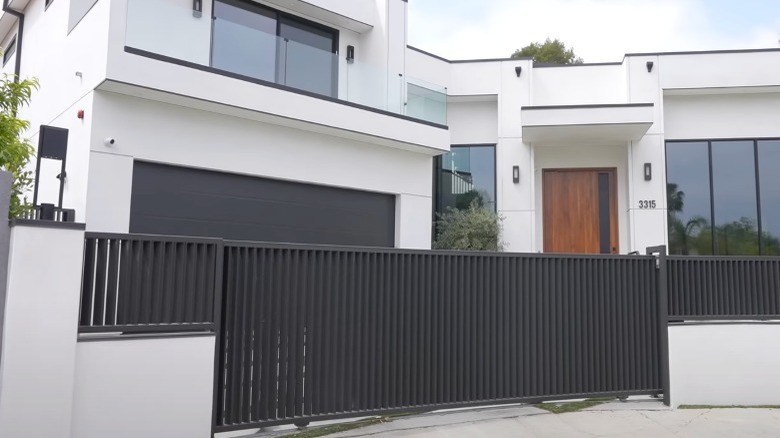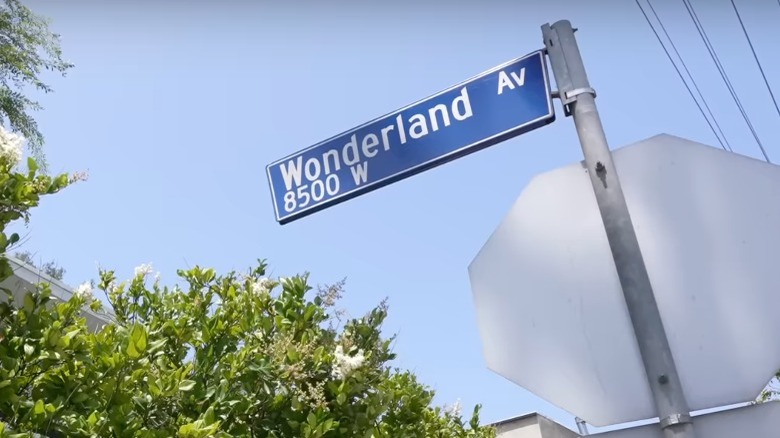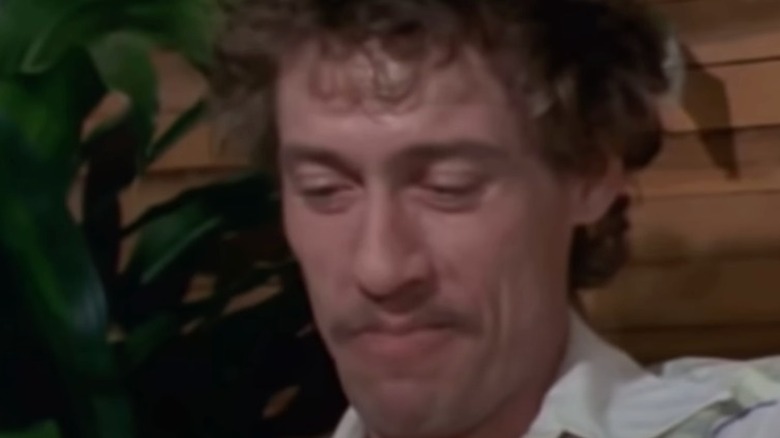Why Eddie Nash Was Acquitted Of The Wonderland Murders
On the morning of July 1, 1981, police arrived at 8763 Wonderland Avenue in the Los Angeles neighborhood of Laurel Canyon to find four victims in various rooms of the apartment. They had been beaten to death with lead pipes, and a fifth victim was barely clinging to life, per Crime Library. The inside looked like "someone had taken a bucket of blood and poured it everywhere," a witness would later recount, according to LA Weekly. The primary suspects in what would become known as the Wonderland murders were Eddie Nash, a drug dealer who owned a string of LA clubs, and the adult film star John Holmes. Both men would go to trial for the killings, but neither was convicted of the murders.
In Nash's case, police and prosecutors tried three times. The first trial in 1990 ended in a deadlocked jury thanks to the $50,000 Nash paid one of the jurors, per the Los Angeles Times. The jury in the second trial, a year later, found Nash not guilty. "There just wasn't enough evidence to convict them," one of the jurors, Bobbi Scoville, told the Los Angeles Times after the trial. A federal case against Nash had a bit more success — Nash admitted to racketeering, money laundering, and jury tampering, but not to the murders, per The Daily Beast. He served four and a half years in prison.
Hood of the month
Eddie Nash, born Adel Nasrallah in Palestine, arrived in Los Angeles in the 1950s and quickly went from selling hot dogs on Hollywood Boulevard to owning multiple businesses, including restaurants, strip bars, and clubs, per Rolling Stone. The police alleged he was also a major drug dealer, among other nefarious activities like pimping, arson, and fencing stolen goods. An LAPD report from 1974 labeled him "Hood of the Month," according to LA Weekly.
Prosecutors believed Nash had ordered the murders of the residents of the Wonderland Avenue home in retribution for having robbed him at gunpoint of more than $1,000,000 in cash, drugs, and jewelry a few days earlier at his mansion, per the Northern Nevada Business Weekly. John Holmes — in hock to one of the apartment's residents, a drug dealer named Ronald Launius — had helped plan the armed robbery of Nash, Holmes' friend and drug supplier, although he didn't participate in the actual crime, according to Crime Library.
A bloodbath
Eddie Nash believed John Holmes was behind the robbery and had his men bring Holmes to Nash's Studio City home, where they beat the porn star until he confessed to his role and gave up the other culprits, according to The Daily Beast. The killers allegedly made Holmes come with them to the Wonderland Avenue apartment and watch as they slaughtered the people inside, according to the Independent. This version of events was refuted by the authors of "John Holmes: A Life Measured in Inches," claiming Holmes hadn't been in the apartment at the time of the murders. Notably, they say his handprint, which police found at the crime scene, could have been left there during one of the many times he visited or stayed overnight there before the killings.
The killers beat Ron Launius, William Deverell (sometimes written DeVerell), Barbara Richardson, and Joy Miller to death, leaving Susan Launius, Ron's estranged wife, for dead after smashing in her skull, per Crime Library.
The third time's a charm
After the two failed criminal cases against Eddie Nash in the early 1990s, it looked like he would completely escape justice. But in 2000, federal prosecutors unsealed a 16-count indictment against Nash — charging him with racketeering, money laundering, jury tampering, and conspiracy to commit murder, among other crimes — for his long-running heroin and cocaine distribution network and the Wonderland killings. The prosecutors named Nash's bodyguard Gregory Diles, who died in 1995, and John Holmes (above), who reportedly died of complications from AIDS in 1988, as co-conspirators in the planning of the murders, per The New York Times.
Nash pled guilty to reduced charges as part of a plea deal in September 2001 but didn't admit to the Wonderland murders. He only admitted that he ordered an associate to round up a crew to go to the Wonderland Avenue apartment to retrieve his stolen items, according to the Los Angeles Times. Nash was 72 at the time of his plea and in ill health and served less than five years before his release. He died in 2014.



